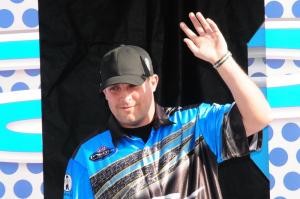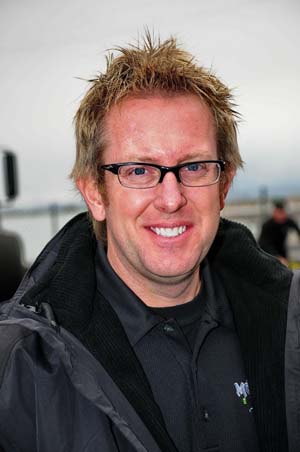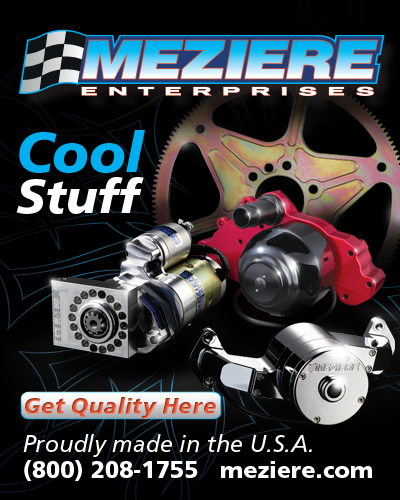NHRA COMBATS ILLEGAL STREET RACING
Fri, 2008-03-07 04:34
 They’d
always start with a cruise toward Washington D.C. to V Street. Cars
lined both sides of the road. Then the bragging began. Stakes on the
illegal street races were raised as high as $5,000 to $10,000. Justin
Humphreys’ 1989 Mustang GT 5.0 could run a high 10 on the street, he
said.
They’d
always start with a cruise toward Washington D.C. to V Street. Cars
lined both sides of the road. Then the bragging began. Stakes on the
illegal street races were raised as high as $5,000 to $10,000. Justin
Humphreys’ 1989 Mustang GT 5.0 could run a high 10 on the street, he
said.“It had nitrous and all that good stuff,” Humphreys said. “Back when I was young, I had 15-20 friends that all had them (Mustangs) and would all go down there and goof off.”
Eventually police would show up and the hundreds in attendance – male and female, of all ages – would scatter, only to reassemble down the road.
“They’d drive five miles to Metro, and race there until the cops showed up,” he said. “Then they’d go back to V Street and race until 1 or 2 a.m.”
 They’d always start with a cruise toward Washington D.C. to V Street. Cars lined both sides of the road. Then the bragging began. Stakes on the illegal street races were raised as high as $5,000 to $10,000. Justin Humphreys’ 1989 Mustang GT 5.0 could run a high 10 on the street, he said.
They’d always start with a cruise toward Washington D.C. to V Street. Cars lined both sides of the road. Then the bragging began. Stakes on the illegal street races were raised as high as $5,000 to $10,000. Justin Humphreys’ 1989 Mustang GT 5.0 could run a high 10 on the street, he said.“It had nitrous and all that good stuff,” Humphreys said. “Back when I was young, I had 15-20 friends that all had them (Mustangs) and would all go down there and goof off.”
Eventually police would show up and the hundreds in attendance – male and female, of all ages – would scatter, only to reassemble down the road.
“They’d drive five miles to Metro, and race there until the cops showed up,” he said. “Then they’d go back to V Street and race until 1 or 2 a.m.”
It’s a desire as old as the horse and chariot. At times it’s nearly impossible to predict. It can start with a glance at a red light, or the rev of an engine. Sometimes, they’re planned in advance with precise organization.
But no matter what, it kills.
Illegal street racing most recently made headlines nationwide when eight spectators were killed on a highway in Accokeek, Md. on Feb. 16. Although it is most likely the most publicized, it is certainly not the only illegal street racing-related fatal crash reported even this month. A quick internet search turns up numerous instances of such activities.
But even one is too many.
As many other legitimate drag racers and NHRA fans have pointed out via online chatrooms and internet blogs, the deaths could have been prevented. There are 140 NHRA-member tracks around the country that offer NHRA Street Legal Drags presented by AAA. Recently, NHRA and some of the elite drivers of the NHRA POWERade Series produced a video that will bring the 'Race the Strip, Not the Street' message to the public at their races, and other outlets like YouTube.
Most of the time Humphreys would race at sanctioned dragstrips. He never raced for money. He wasn’t looking to get in trouble, and at that time local police authorities stepped up patrols of the area, he said. That’s why, eventually, he stopped attending illegal street races and raced only on the track. Now he uses his talent professionally as driver of the RaceRedi Motorsports Pontiac Pro Stock GXP in the NHRA POWERade Series.
Like many others, he says that increased patrols of known street-racing draws can help and stiffer penalties for those caught racing on the street are needed as well.
“Something needs to happen,” Humphreys said. “It’s just so dangerous. It’s just nonsense, especially in our area (of Maryland/Washington D.C.). There’re so many tracks around.”
Many of the fastest race car drivers in the world – the stars of the NHRA POWERade Series – started their careers in cars much slower than the 300 mph ones they drive now.
All say racing belongs on sanctioned tracks.
 “I’ve never been a fan of street racing, now or even when I was a kid,” said Tommy Johnson Jr., whose Monster Energy/Lucas Oil Dodge Charger covers a quarter-mile at just over four seconds. “Not only are you putting yourself in danger, you are also putting innocent bystanders at risk with all the elements that are out of your control when racing on the streets. Racing at an NHRA-sanctioned track is not only safer, it’s legal and won’t cost you your license.”
“I’ve never been a fan of street racing, now or even when I was a kid,” said Tommy Johnson Jr., whose Monster Energy/Lucas Oil Dodge Charger covers a quarter-mile at just over four seconds. “Not only are you putting yourself in danger, you are also putting innocent bystanders at risk with all the elements that are out of your control when racing on the streets. Racing at an NHRA-sanctioned track is not only safer, it’s legal and won’t cost you your license.”Organized auto racing as we know today probably began on the Bonneville Salt Flats, with the forming of the Southern California Timing Association. A short time later, Wally Parks, a central figure in SCTA’s creation, founded the National Hot Rod Association to take racing from the streets to sanctioned tracks certified for safety and equipped with the latest in timing technology.
Today NHRA is still dedicated to giving all aspiring drivers a place to race.
It’s impossible to predict who will race on the street – men and women of all ages put themselves and others in danger by choosing to pursue their desire for speed on public roadways instead of at the track.
NHRA and the thousands of legitimate drag racers who use their talent for speed wisely urge them to choose otherwise.
To find an NHRA track near you, or for more information about Street Legal Drags presented by AAA, visit NHRA Street Legal
TAKING THE CAMPAIGN TO VIDEO
NHRA and the elite drivers of the NHRA POWERade Series drivers take their ‘Race the Strip, Not the Street’ message directly to the public through a video featuring the NHRA Street Legal Drags, presented by AAA, and the 140 NHRA member tracks around the country that host events designed to get illegal street racing off of public roadways and onto safe, sanctioned tracks. The video, featuring drivers Robert Hight, Bob Vandergriff, Del Worsham, Jeg Coughlin, Doug Herbert, Hillary Will and Brandon Bernstein, will be shown at NHRA POWERade Series events and linked on YouTube.
Categories:




































